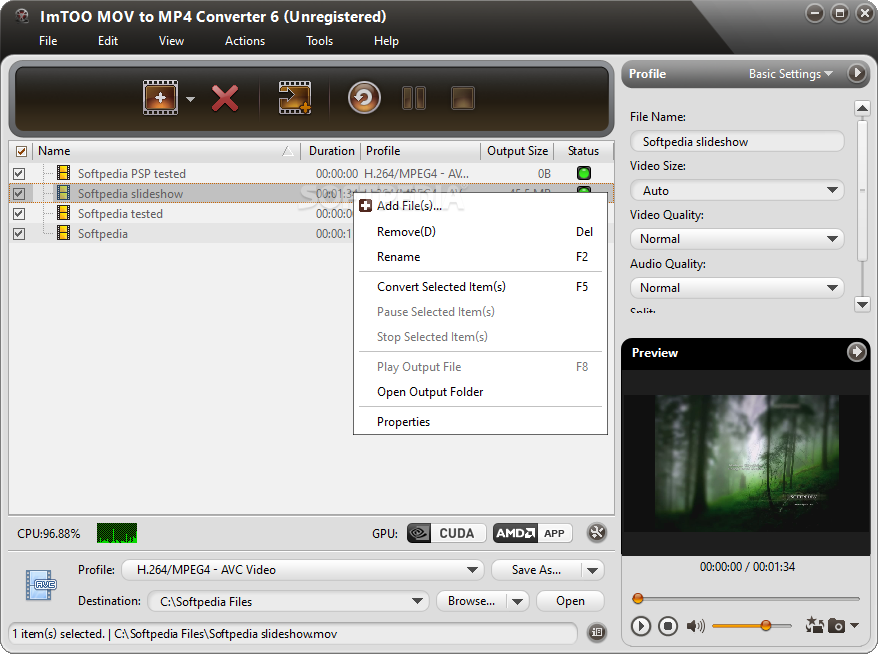

The format specifies a multimedia container file that contains one or more tracks, each of which stores a particular type of data: audio, video, or text (e.g., for subtitles).

Like most modern container formats, it allows streaming over the Internet. MPEG-4 Part 14 or MP4 is a digital multimedia format most commonly used to store video and audio and store other data such as subtitles and still images. Because both the QuickTime and MP4 container formats can use the same MPEG-4 formats, they are mostly interchangeable in a QuickTime-only environment. The International Organization for Standardization approved the QuickTime file format as the basis of the MPEG-4 file format. QuickTime File Format (QTFF) is a computer file format used natively by the QuickTime framework. mov file, in most cases -codec copy should suffice.International Organization for Standardization Note: In some cases it may be necessary to actually convert the audio and video codecs contained within the. Lots of good choices! For FFmpeg the command line is only slightly different: ffmpeg -i input.mov -codec copy output.mp4 Compile your own bleeding edge FFmpeg from FFmpeg trac instructions.Use Doug McMahon's great Trusty Multimedia PPA.
If you would prefer a modern version of FFmpeg that fits in well with Trusty Tahr 14.04 (and I would recommend this path) there are 2 good choices: Use the following: sudo apt-get install libav-tools libavcodec-extra-54Īnd then to simply change containers from mov to mp4: avconv -i input.mov -codec copy output.mp4 If you are keen to use default 14.04 offerings you would be using avconv from libav-tools. Unfortunately Ubuntu 14.04 does not have FFmpeg at all in the standard repositories, an issue that has been rectified in subsequent Ubuntu releases.


 0 kommentar(er)
0 kommentar(er)
